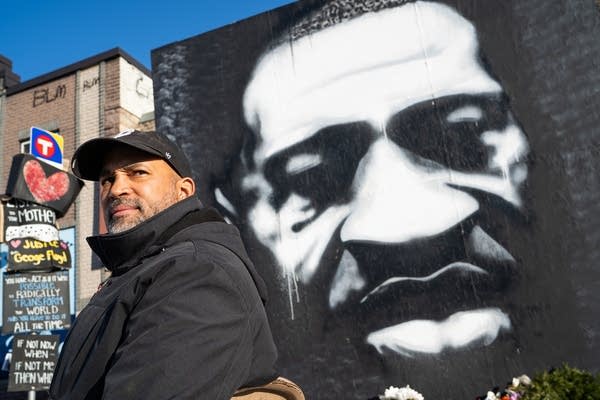Bringing the ‘Icon of a Revolution’ to George Floyd Square
Peyton Scott Russell’s black and white painting has become a symbol in a global movement

Artist Peyton Scott Russell in front of "Icon of a Revolution," his portrait of George Floyd, in Minneapolis on Dec. 12.
Evan Frost | MPR News
Go Deeper.
Create an account or log in to save stories.
Like this?
Thanks for liking this story! We have added it to a list of your favorite stories.


